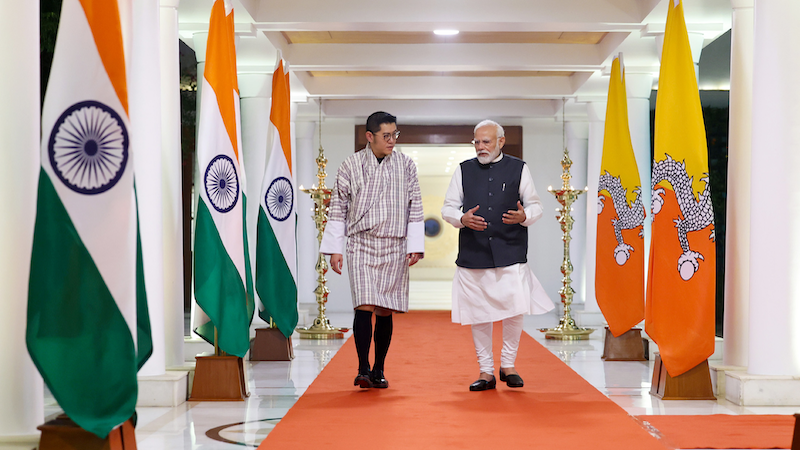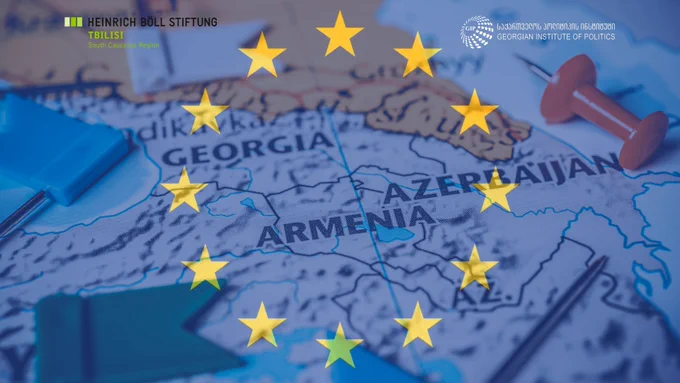
King Jigme Khesar Namgyel Wangchuk of Bhutan’s eight-day visit to India from November 3-10 is most likely aimed at mollifying India on the eve of a possible border deal with China. Recall that the King had visited New Delhi earlier this year in April as well. During the visit to New Delhi, the King met with Prime Minister Modi and senior officials of the government.
The government terms relations with Bhutan an “exemplary bilateral partnership” and the Joint Statement following the visit listed a range of areas in which the two cooperate. But the timing of the visit suggests that it is related to the fast-moving border talks between China and Bhutan. At the official level, though, there have been no indications that his subject has come up for discussions.
Going by the Joint Statements issued after the King’s visits, there was nothing remarkable. The visits were about furthering the already close India-Bhutan relations and their focus was on the multiple areas of cooperation between the two sides, primarily on hydropower and connectivity. However, two visits by the heads of state in one year is somewhat unusual even if the country is Bhutan, and is most likely linked to the Bhutan-China border talks.
The key point of departure has been the “3-Step Roadmap”, a Memorandum of Understanding (MoU), signed by China and Bhutan in October 2021 during the 10th round of their Expert Group Meeting (EGM) in Kunming, China, which envisaged a three-stage process. This involves, first, the delimitation of the border on maps through talks between the two sides, followed by joint surveys which would finally lead to an actual demarcation of the 477 km border between them. India’s response at the time had been that it had noted the signing of the MoU and that like Bhutan, “India has similarly been holding boundary negotiations with China.”
Last month, China and Bhutan held their 25th round of border talks in Beijing. The previous 24th round had been held eight years earlier in 2016. The Bhutanese delegation was led by Lyonpo Tandi Dorji, the Foreign Minister of Bhutan and the Chinese one by Sun Weidong, Vice Foreign Minister of China. Sun is a former Chinese ambassador to India. Maj Gen (retd) V Namgyel, the Bhutanese ambassador to India and the Bhutan foreign secretary Pema Choden were part of the Bhutanese delegation.
Beginning in January this year, there has been a quick sequence of Expert Group Meetings, that culminated in the 25th round of their border talks. The 11th round of Expert Group Meeting was held in Kunming in January 2023. In May, the two sides held their 12th round of their Expert Group Meeting in Thimphu, Bhutan, and said that they had made progress in discussing the “3-Step Roadmap” towards settling their border issue. In August, they held the 13th Expert Group Meeting in Beijing, followed by the 25th round of talks last month in Beijing.
During the 25th round of talks, the two sides signed a Cooperation Agreement detailing the functioning of the Joint Technical Team on the delimitation and demarcation of the Bhutan-China boundary that had been agreed to after the 13th Expert Group Meeting.
Dorji also met his Chinese counterpart Wang Yi and both sides indicated that they wanted a quick border settlement. According to a statement by the Chinese foreign ministry, Wang said that “the conclusion of boundary negotiations and the establishment of diplomatic relations between China and Bhutan” would serve the fundamental interests of both countries. As of now, Bhutan does not have ties with any of the permanent members of the UN Security Council.
In an interview with The Hindu last month, the current Prime Minister of Bhutan, Lotay Tshering, whose term ends this month, had said that he expected progress to be made and confirmed that China and Bhutan were “inching” towards completing their 3-Step Roadmap and that the two sides had “managed two to three meetings and we feel we are nearing the completion of the three-step roadmap” and that the talks also included a possible tradeoff between Chinese claims in Doklam and the ones in northern Bhutan.
The main areas in dispute between China and Bhutan are 269 sq kms on the western border along the Chumbi Valley and two northern areas of Jakarlung and Pasamlung valleys measuring 495 sq kms. Since 2020, the Chinese have also raised an additional claim in eastern Bhutan. There are two important tri-junction points involving India, China, and Bhutan. The one in the west involves Doklam, and the one in the east is the eastern terminus of the McMahon Line which delineates the Sino-Indian border in the region. Doklam was also the site of an India-China standoff in 2017. This is the area where the India-China-Bhutan borders meet but India considers Doklam to be Bhutanese territory and is concerned that it could be ceded to China in the border settlement and enable them to overlook the sensitive Siliguri Corridor that links mainland India to the Northeastern region.
In April, the Foreign Secretary V M Kwatra had briefed the media on the visit. In response to direct questions as to whether there had been any discussions on the China-Bhutan border negotiations, especially Doklam, Kwatra noted that India and Bhutan remain in close touch and maintain “close coordination” relating to our national and security interests. As to the Doklam issue, he referred to the Ministry’s earlier statements which “explicitly bring out our position on the determination of the trijunction boundary points.”
He was referring to the Ministry of External Affairs (MEA) statement at the onset of the 2017 Doklam crisis which had laid out the Indian view of how the crisis had unfolded. Further, it had revealed that in 2012, India and China “had reached an agreement that the tri-junction boundary points between India, China and third countries will be finalised in consultation with the concerned countries.” Adding that any attempt “to unilaterally determine trijunction violates this understanding.”
In an interview with a Belgian newspaper in March, Tshering had more or less upheld the Indian position when he noted that “Doklam is a junction point between India, China and Bhutan. It is not up to Bhutan alone to fix the problem. There are three of us… We can discuss this as soon as the other two parties are ready.”
The border settlement, if and when it comes, will mark a major change in Bhutan’s geopolitical perspective. But as for the present, the Bhutanese seem determined to press ahead. Their problem is the lack of capacity to police its borders and the deliberate Chinese pressure to press their claims.
About the author: Manoj Joshi is a Distinguished Fellow at the Observer Research Foundation
Source: This article was published by Observer Research Foundation
